
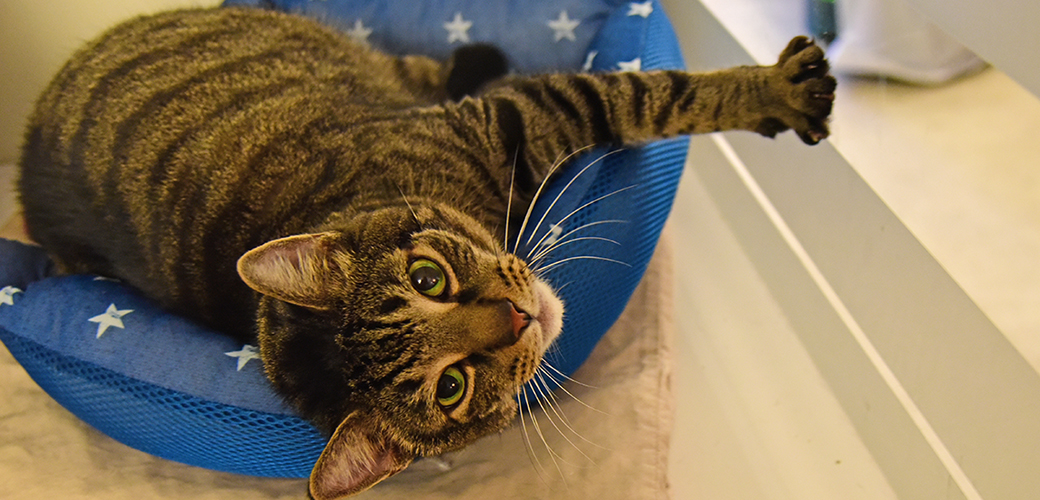
When Erin G. and Sara B. began their search for a cat to adopt, their criteria was simple.
“Sara didn’t want a kitten, and I have a thing for underdogs,” explains Erin, who adopted her previous two cats from the ASPCA.
As soon as they spotted photos of Sanderson, an eight-year-old brown tabby on the ASPCA’s website, they were smitten.
“The photos really captured his essence, and his name drew us in,” explains Erin. “It’s so gentlemanly. I also thought he was cute and liked that he was older.”

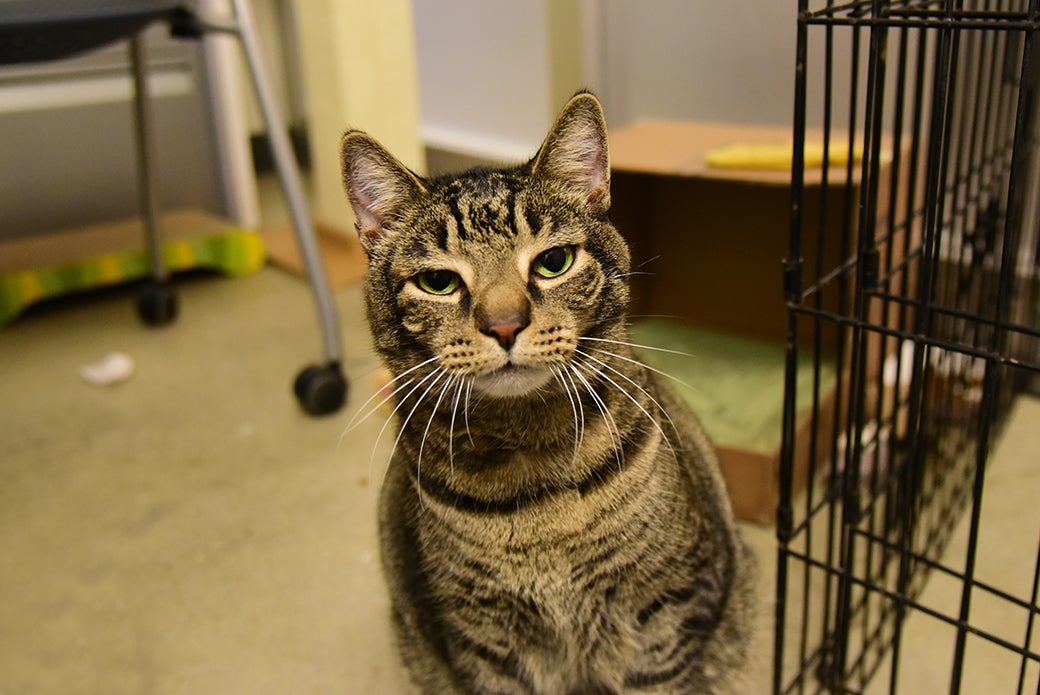
Prepared for a New Pet
Erin and Sara both grew up with animals.
“My mom was the patron saint of strays,” says Erin, a filmmaker and professor from St. Louis, Missouri. “It was like Dr. Dolittle in my house growing up.”
Sara also from Missouri, was raised outside Kansas City, alongside dogs, goats and chickens. But she was allergic to cats.
“I never had any feelings toward them,” explains Sara, who works on the education team at the Museum of Modern Art. “But when Erin and I met and I got to know her cat Darren, I understood the appeal.”
Sara began getting allergy shots so she could spend time with Erin at her apartment with her cat Darren, who died in July at the age of 17.
Erin planned to wait a year before adopting another cat, but after three months she was more than ready. “It was important that a new cat did not feel like a replacement,” she says.
Sanderson’s Road to Recovery
Originally transferred to the ASPCA from Animal Care Centers of NYC’s Brooklyn shelter on October 31, 2017, Sanderson was a stray in desperate need of medical attention.

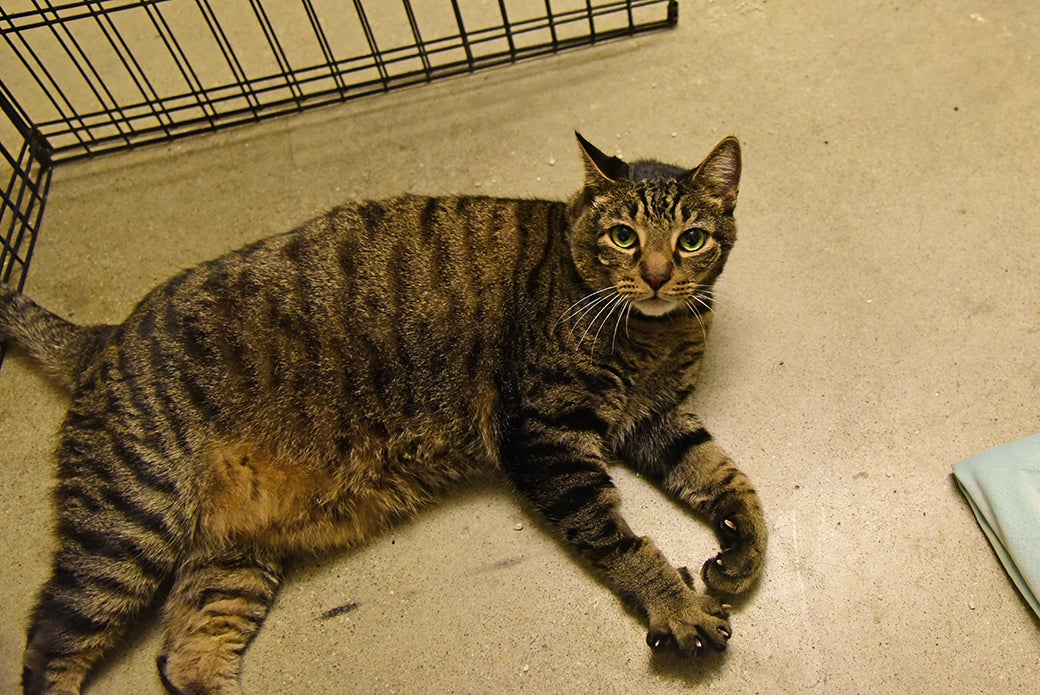
“There was a large wound of his right cheek, a smaller wound on his left cheek, and some superficial wounds on his neck area,” explains Dr. Felicia Magnaterra, Manager of Adoptions Veterinarians at the ASPCA, who speculated Sanderson’s laceration and puncture wounds were caused by something sharp, like barbed wire. “He also had torn toenails on his right front paw that indicate how he may have used that paw to try to free himself from the wound source.”
Sanderson also had a ruptured ear drum and a history of ear mites and urinary tract obstructions.
Under the veterinary team’s watchful eyes, Sanderson’s left cheek, neck wounds and toenails healed unremarkably. But his right cheek wound was significantly deeper, causing him to scratch and re-open it multiple times.
Sanderson wore an e-collar to prevent further self-trauma, and Dr. Magnaterra prescribed medication to ease his discomfort. He then went to a foster home to recover and was given a special diet to lessen the likelihood of recurring urinary tract issues.
Sanderson’s multiple medical issues and age made it difficult for him to find a home that was the right fit. Since his arrival in 2017, he had been adopted and returned twice to the Adoption Center, and hoping that the third time would be the charm! ASPCA staff were all rooting for this sweet boy, and Sanderson even received special promotion across social media, with hope that someone would fall in love with him.

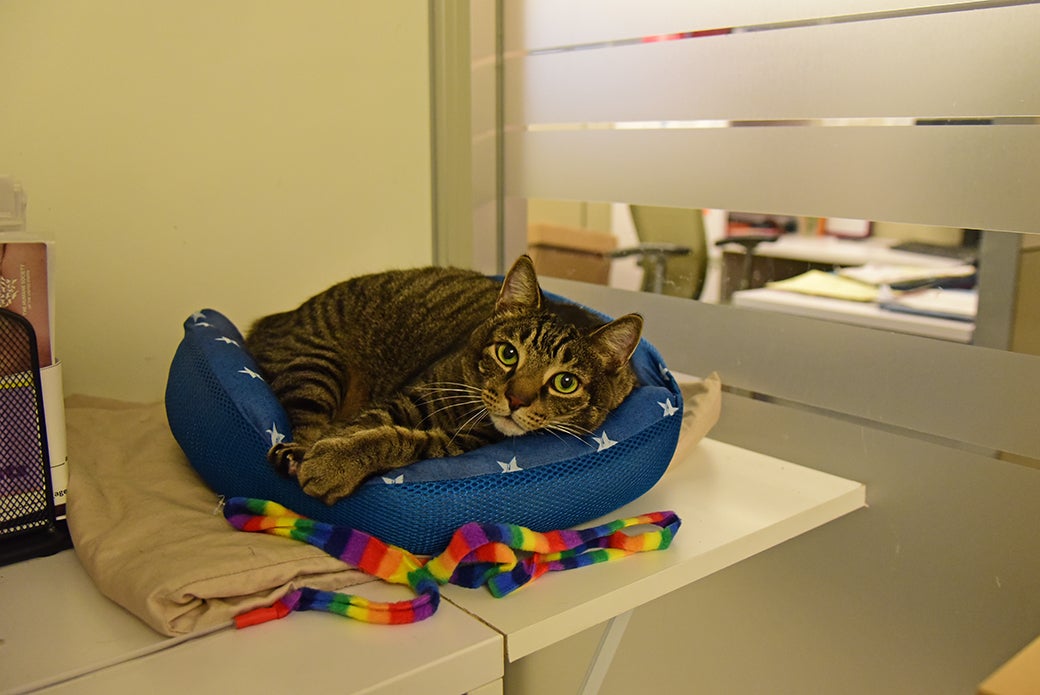
Meeting Sanderson in Person
On a rainy Sunday afternoon in October 2019, Erin and Sara visited the ASPCA. Adi Hovav, Behavior Manager, introduced them to Sanderson, who was living in a staff member’s office at the time.
“He was sleeping and got up immediately,” recalls Erin. “He head-butted my hand and let me pet him.”
They couldn’t wait to make Sanderson a part of their family and decided to take him home that day.
Life with Sanderson since has been full of love and new routines for the family. Erin reports that at 6:38 a.m.—on the dot—Sanderson is ready for breakfast.
“He has his own internal clock and a lumberjack appetite,” she says. “If we’re late waking up, he lets us know by knocking over the bedside rice paper lamp or very gently tapping our heads with his paw.”
As athletic as a younger cat, Sanderson eagerly chases laser lights and darts through his crinkly animal tunnel. He also likes to peer out the windows of Erin’s Park Slope apartment, where he has a front row seat to the neighborhood.

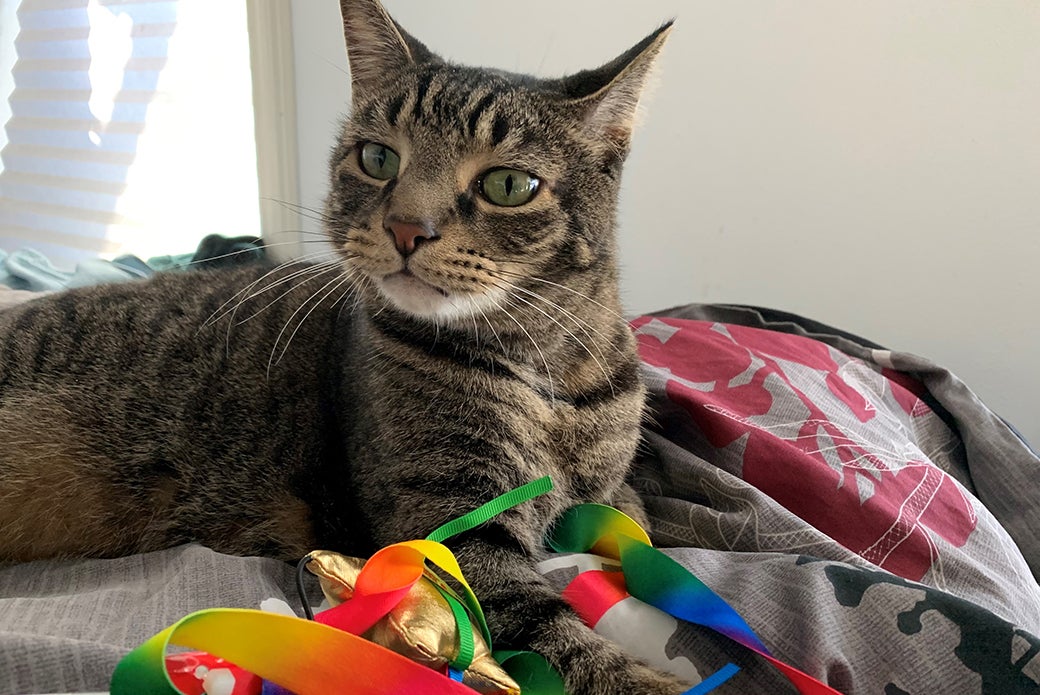
“There’s a sweetness to him,” says Erin. “If you lean your face in toward him, he’ll lean in toward you and his eyes will cross. He’s one-of-a-kind.”
Photos of Sanderson graced the couple’s holiday card, and he’s acquired a plethora of endearing nicknames.
“He’s a real ambassador for cats,” Erin says. “Neighbors come over to just visit Sanderson. Our friends love him!”

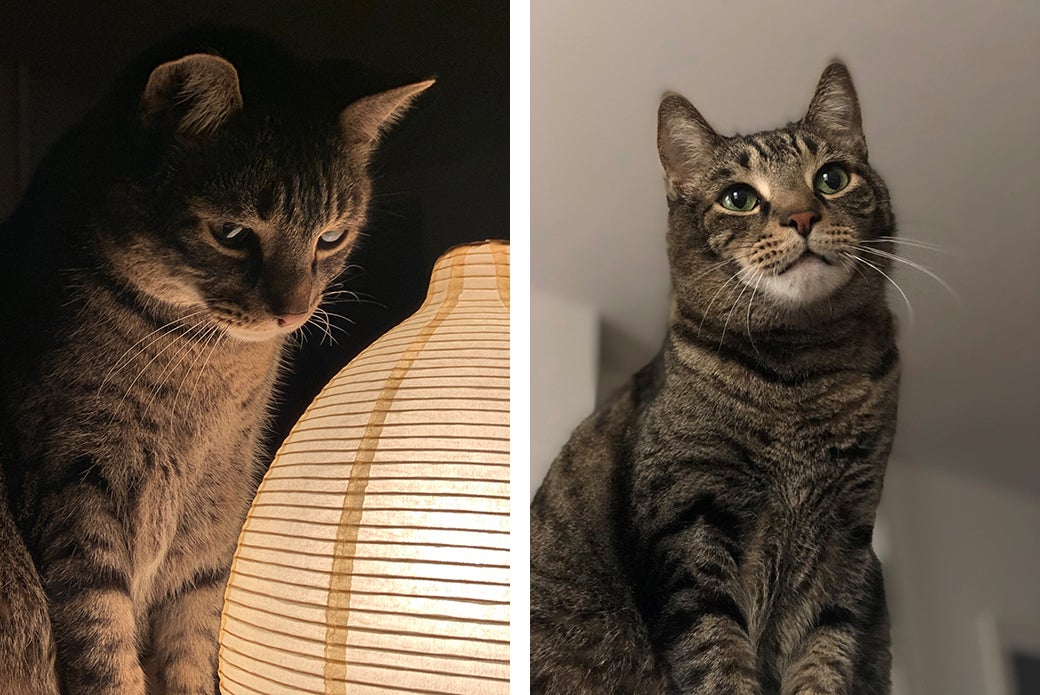
A Standout Senior
Dr. Magnaterra says Sanderson–whom she calls “Sandy”— is her favorite patient since she joined the ASPCA in 2015.
“He is a robust and confident cat who could clearly communicate through his body language,” she explains. “He would get very grumpy and let me know when I should slow down my approach, and I would modify my handling to honor his message. Then he’d return to his affectionate self.
“The injuries Sandy sustained and the secondary self-trauma he suffered is further evidence of his resiliency,” Dr. Magnaterra adds. “To see him make a full recovery and go to a home with people who love him dearly is incredibly rewarding.”
For Erin and Sara, Sanderson is proof that cats can bounce back from trauma, and resist “acting their age.”
“Senior pets can exhibit the same personalities people seek out in young cats; they can be playful or lazy, cuddly or independent,” says Kirstin Burdett, Senior Manager of Admissions and Matchmaking. “This population often gets overlooked or is slower to find homes. We celebrate when every pet goes home, but I admit that I smiled just a little bigger when Sanderson was adopted.”

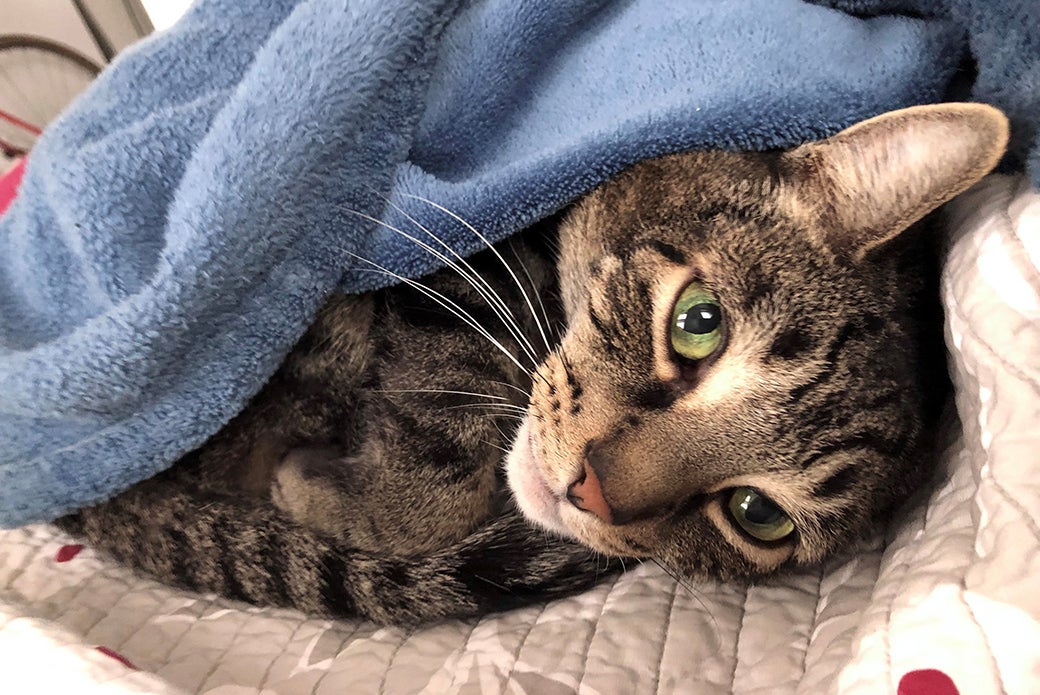
Source: Read Full Article
